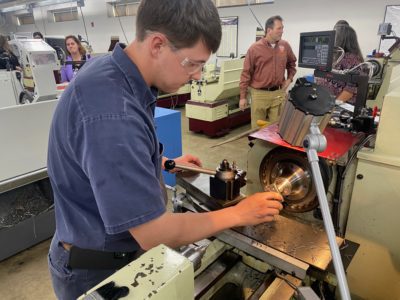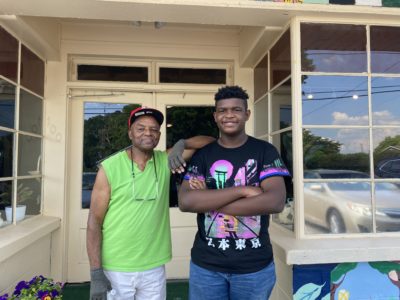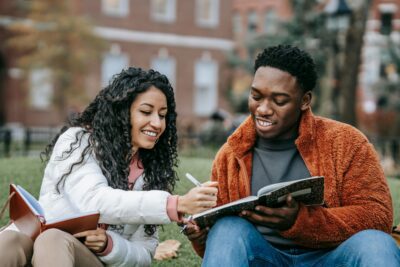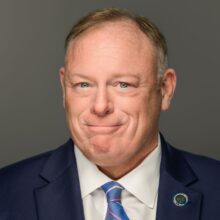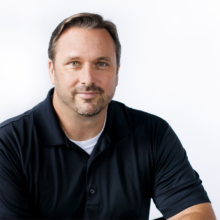
As we look back on the last year and a half of education during the pandemic, it is easy yet disheartening to see what a uniquely challenging time this has been for students and teachers. According to a recent McKinsey & Company report, as the 2020-21 school year began, just 40% of K-12 students were in districts that offered any in-person instruction. And students faced multiple schedule changes, were assigned new teachers mid-year, and often struggled with remote learning, which left them feeling frustrated or despaired because they haven’t yet experienced this delivery model as part of their regular curricula.
Earlier this year, North Carolina’s Department of Public Instruction released data indicating that almost 23% of students in traditional public schools were “at-risk for academic failure and are not successfully progressing toward grade-level promotion.”
As we endeavor to move through the pandemic “beginning of the middle” recovery phase, school districts, administrators, and educators are at crossroads. For many, they can’t simply resume pre-pandemic instruction and classroom time, or replace what was formerly in place. There is no getting “back to normal” after the past 20 months (and ongoing) of COVID-19 upheaval and confusion in education — not even to a “new normal.” We cannot go back to how things were. We’ve been through too much and have seen too much of what is possible.
After being challenged as a nation, it’s time that we work together for envisioning a new and better build-out in education, and respond thoughtfully, aspirationally, and strategically. Indeed, the U.S. education sector is facing one of its most significant tests ever. To pass this test, we must resist reactionary traditionalism and instead confront confusion, learn together, and bring forward the good work that many have collectively contributed for reimagining a new road ahead.
Confront confusion
First, we must address the confusion that emerged as schools were vacated, and the rapid change that dedicated teachers and leaders were forced to invent with different modes of instructional delivery and support. What many bravely did was adopt an emergency strategy for remote learning, and we applaud them. However, there is a world of differences between emergency-remote learning and the highly engaging, high-quality digital learning and support found in the best online and blended learning that talented education professionals have developed and delivered for the last 20 years.
Confusing emergency-remote learning with the best of digital learning is like equating a life raft with a luxury liner. They both float, and they both may get you to shore, but the experience for those aboard is going to be vastly different and respectively memorable. Most challenging is a problematic conflation that confuses our conversations. It prompts a reactive “get back to normal” mindset and bypasses contemplation of effective, ground-breaking learning modes and models for the months and years to come.
Learn together
Second, with this distinction in mind, today is the day to look at what we know about what works and what doesn’t in in-person, online, and blended learning. Strong organizations have been continuously improving and advancing this practice for decades, including Western Governors University, Quality Matters, the Aurora Institute, and many regional institutions, including North Carolina’s nationally recognized community colleges. In addition, we witnessed incredibly creative and effective innovations from the heroic efforts of many who experimented successfully during the pandemic, including gradeless assessment, new learning and engagement strategies, and inventive outreach to close the continuing and deeply problematic digital divide.
It is time to reflect on and leverage what we have learned, both over a long history of quality online and blended education and from the inspiring innovations of teachers and leaders responding to the COVID-19 crisis at hand.
Reimagine the road ahead
With less confusion and more learning, we can use this time to rethink and reimagine our teaching, leading, and education policies and practices. Funding and fighting for “new normal” school strategies are unlikely to fuel sustainability, scalability, and significantly better educational outcomes. However, by coming together to visualize what is possible and what to bring forward, there is a real opportunity to emerge better and more robust than before the crisis.
Most importantly, to do this work, oversimplified arguments about in-class instruction versus online — or traditional versus remote learning models — need to be tabled so we can thoughtfully engage in more practical and less polarizing conversations that free us to take advantage of all the tools and techniques at our fingertips. In short, now is the time to commit to exploring and working together to build out a “new possible” in education, one that can help us serve more, and more diverse students, more effectively than ever before.
Recommended reading
